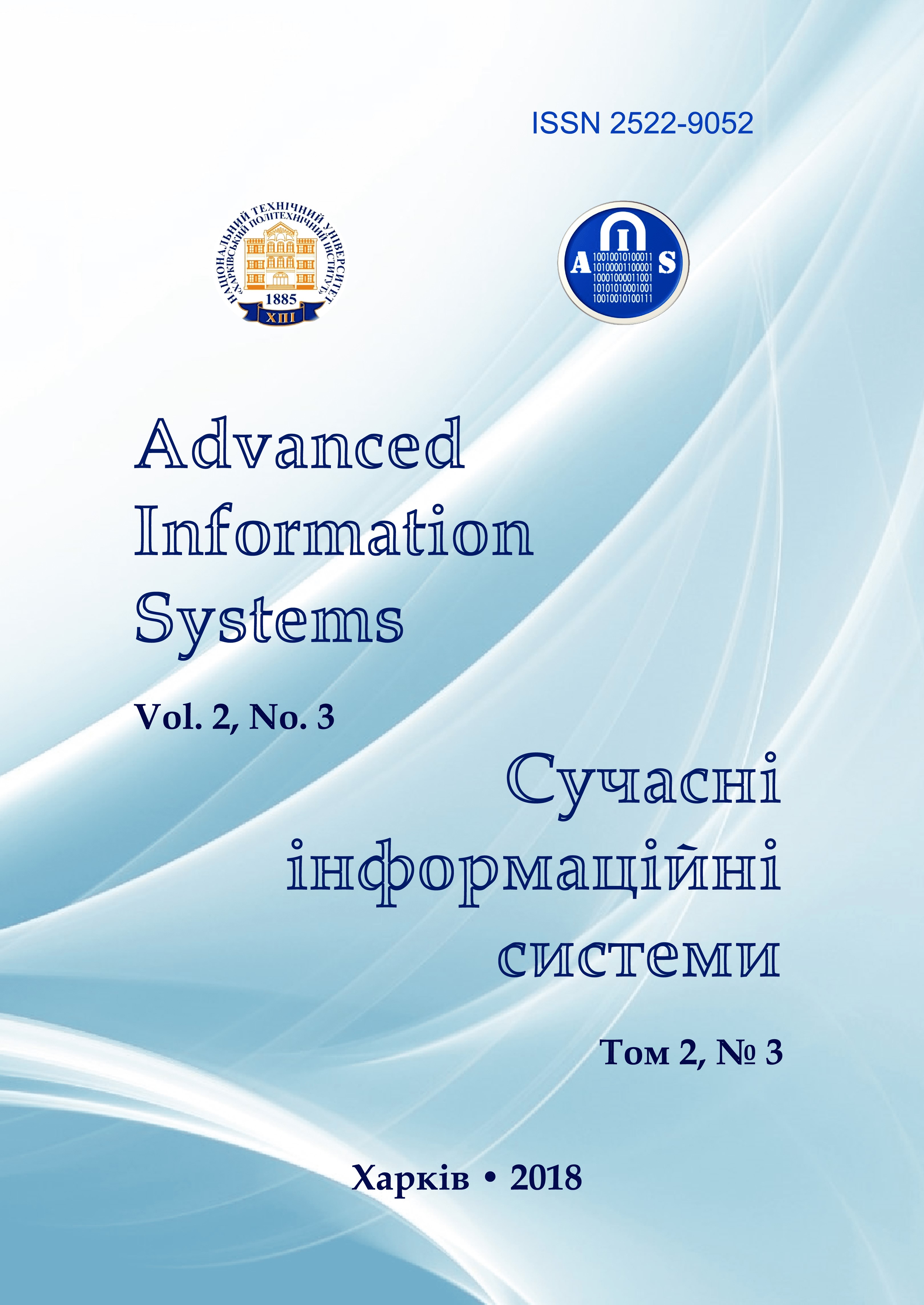Construction of temporal rules for the representation of knowledge in information control systems
Main Article Content
Abstract
The subject matter of the article is the processes of constructing the representation of knowledge in information control systems based on temporal dependencies, which determine the sequence of actions on a complex control object. The goal is to develop methods for constructing temporal rules based on the analysis of the event logs of the control object and take into account the features of both the process and functional approaches to the management of the enterprise. Tasks: constructing models of temporal dependencies linking successive pairs of actions, as well as the current action with subsequent action in the future. Development of methods for constructing temporal rules to provide support for making management decisions based on predicting the behavior of the control object in the current, including non-standard situation. The methods used are: methods that are used are the methods of intellectual analysis of processes, which provide for constructing dependencies between events based on the analysis of the log of control object in information control systems. The following results were obtained. Models of temporal rules that determine the sequence in time of actions at the control object are developed. Methods for constructing temporal rules are proposed to support as process as functional enterprise management. Conclusions. The scientific novelty of the results obtained is as follows: models of temporal rules have been developed, linking current events with subsequent ones and future events, with each event corresponding to a separate action on the control object. Such models take into account both the values of all event attributes and a selected subset of attributes in accordance with the features of the process and functional management event logs. This makes it possible to form possible sequences of actions in a given situation and thereby ensure the possibility of supporting management decision-making by choosing from these possible sequences of actions. The proposed methods for constructing temporal rules include the steps of selecting input traces during process control or generating sequences of events for the life cycles of artifacts during functional management, generating rules for each trace or sequence of life cycle events and integrating these rules on the entire set of input events. The obtained methods are designed to build knowledge representation in information and control systems.
Article Details
References
Vom Brocke, J. (2015), Handbook on Business Process Management 1. Introduction, Methods, and Information Systems, Springer-Verlag Berlin Heidelberg, 709 p., available at: http://dx.doi.org/10.1007/978-3-642-45100-3.
Kalynychenko, O., Chalyi, S., Bodyanskiy, Y., Golian, V. and Golian, N. (2013, September), “Implementation of search mech-anism for implicit dependences in process mining”, 2013 IEEE 7th International Conference on Intelligent Data Acquisition and Advanced Computing Systems (IDAACS). Institute of Electrical and Electronics Engineers (IEEE), available at: https://doi.org/10.1109/idaacs.2013.6662.
Richardson, M. and Domingos, P. (2006), “Markov logic networks”, Machine learning, 62(1-2), pp. 107-136, available at: http://dx.doi.org/10.1007/s10994- 006-8633-8.
Gogate, V. and Domingos, P. (2010), “Formula-Based Probabilistic Inference”, Proceedings of the Twenty-Sixth Conference on Uncertainty in Artificial Intelligence, Catalina Island, CA — July 08 - 11, 2010.
Chala O.V. (2018), “Method of hierarchical deduction in the knowledge base of the information-control system in the paradigm “Enterprise 2.0””, Control, navigation and communication systems, 2018, No. 4 (50), pp. 86-90.
Kalenkova A.A., van der Aalst W.M.P., Lomazova I.A. and Rubin V.A. (2017), “Process Mining Using BPMN: Relating Event Logs and Process Models”, Software and Systems Modeling, 16 (4), pp. 1019-1048, available at:
http://dx.doi.org/10.1007/s10270-015-0502-0.
Müller, D., Reichert, M. and Herbst, J. (2007), “Data-Driven Modeling and Coordination of Large Process Structures”, On the Move to Meaningful Internet Systems 2007: CoopIS, DOA, ODBASE, GADA, and IS, available at:
http://dx.doi.org/10.1007/978-3-540-76848-7_10.
Polyvyanyy A., Smirnov S. and Weske M. (2015), “Business process model abstraction”, Handbook on Business Process Management, 1, pp. 147-165, available at: http://dx.doi.org/10.1007/978-3-642-45100-3.
Levikin V.М. and Chala O.V. (2018), “Development of the representation of causal relationships for the knowledge base of the process management system”, Bulletin of the National Technical University "Kharkiv Polytechnic Institute". Series: System Analysis, Management and Information Technology, No. 21 (1297), pp. 48-53.
Levykin V. and Chala O. (2008), “Method of determining weights of temporal rules in Markov logic network for building knowledge base in information control system”, EUREKA: Physics and Engineering, 5, pp. 29-35.
